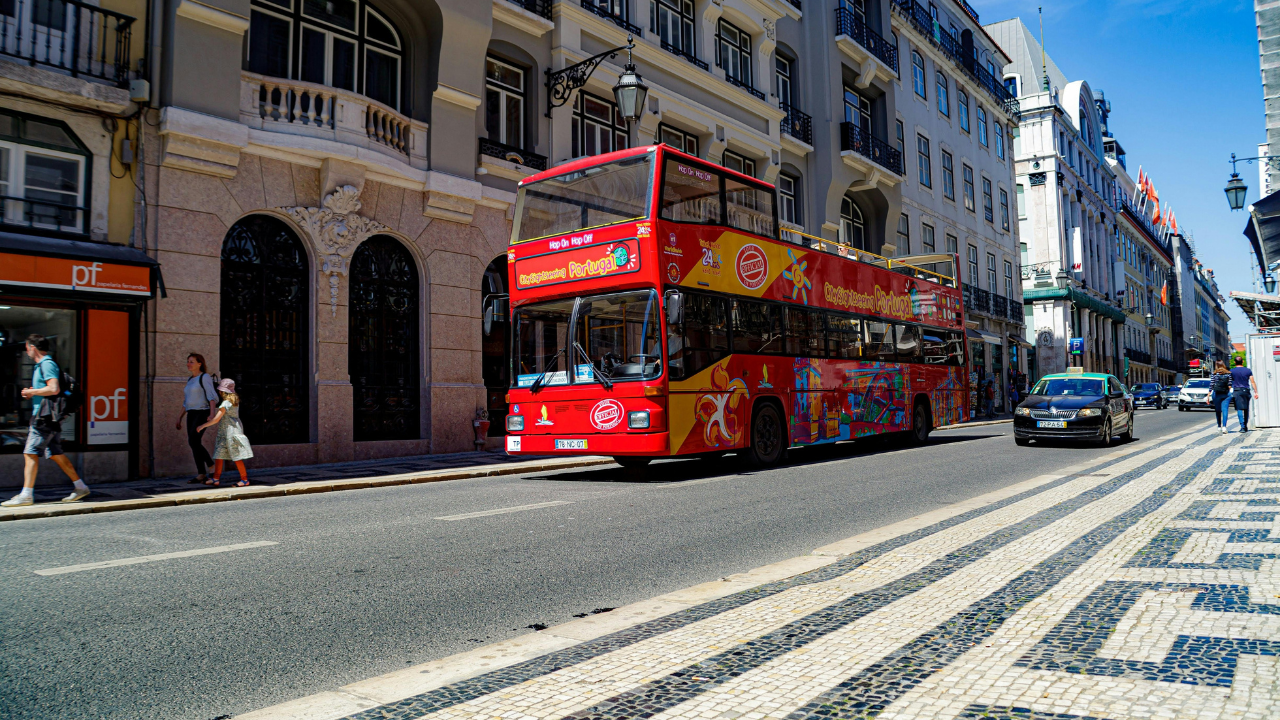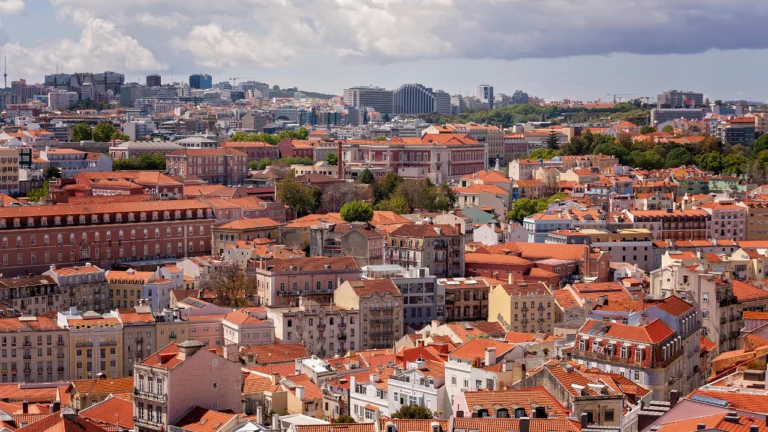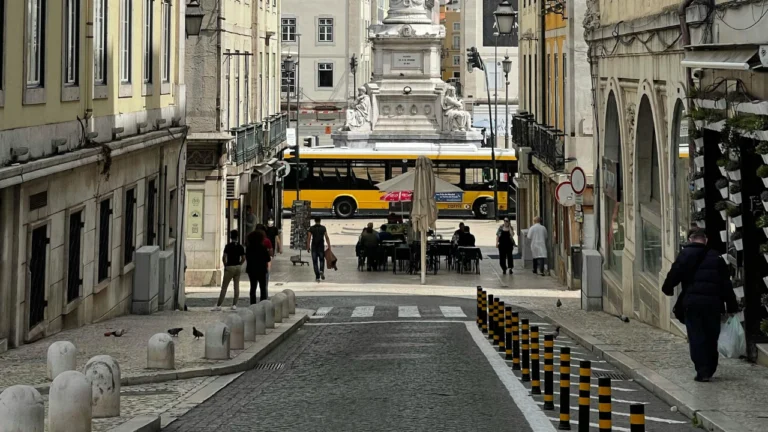Lisbon Hop-On Hop-Off Tours Your €15 City Solution
Last updated on August 15, 2025 at 19:58:29
Discover All the Sights and Secrets of Lisbon with Hop-On Hop-Off Tours:
- Why locals secretly prefer tourist buses to Tram 28
- How to avoid Lisbon’s 23 daily pickpocketing incidents
- The €15 daily pass that beats multiple €3.10 tram tickets
- Which morning hours guarantee empty buses and perfect photos
- How professionals navigate Lisbon’s 200-meter elevation changes
Rain was hammering our Alfama apartment windows when my daughter Lena made the observation that changed everything. She pressed her small hand against the cold glass, watching tourists slip on wet cobblestones below, and said something I’ll never forget.ch
“Those people look miserable, Dad. Why are we pretending this is fun?”
Eight years old, and she’d just demolished eighteen months of my carefully constructed “authentic Lisbon experience” in twelve words.
🚋 Lisbon Transport Reality Check
Discover if you’re a Tram 28 romantic or a bus-savvy insider.
The Day Senhora Rosa Saved Our Sanity
I was still processing Lena’s brutal honesty when our neighbor knocked. Senhora Rosa never just arrives—she makes an entrance. That morning, she burst through our door carrying a thermos of coffee and wearing the expression of someone about to deliver urgent news.
“I saw you walking to Belém yesterday,” she announced, settling into our kitchen chair. “In the rain. With children. Are you insane?”
Before I could defend myself, she continued. “Listen, I’ve lived here since 1946. You know what I’ve learned? Pride makes you tired. Intelligence makes you comfortable.”
She pulled out her phone—yes, my 78-year-old neighbor has a smartphone—and showed me something that made no sense. It was a photo of her and three friends, sitting on top of a bright red tourist bus, raising glasses of wine.
“Every Sunday,” she explained. “We ride the tourist bus. Best views in the city, comfortable seats, and no climbing. My doctor does it. The pharmacy owner does it. Even Father António from Santa Engrácia does it. Only stubborn tourists walk everywhere.”
I stared at the photo. These weren’t tourists. These were born-and-raised Lisboetas, treating the hop-on hop-off bus like their personal chauffeur service.
Testing the Theory
The next morning at 7:15 AM, I stood at the bus stop near Praça do Comércio with my family. Theo, my five-year-old, was excited about riding “the big red bus.” Lena remained skeptical. My wife Sarah held the umbrella, trying not to laugh at my obvious discomfort.
The bus arrived empty except for two people: a man in a business suit reading a newspaper and a woman in nursing scrubs eating a pastry. Not exactly the tourist crowd I’d expected.
We climbed to the upper deck. The city spread out below us, still quiet, still waking up. The morning light hit the river in a way I’d never seen from street level. Theo immediately ran to the front row, declaring himself “King of Lisbon.”
As we pulled away, something unexpected happened. Without the stress of navigation, without watching for pickpockets, without calculating whether each hill was worth the effort—I actually started seeing the city I’d been living in.
The Data Behind My Lisbon Hop-On Hop-Off Tours Revelation
Let me share some data that shifted my entire perspective. According to Lisbon police statistics, pickpocketing incidents average 23 per day, with the majority occurring on Tram 28 and Tram 15. In eighteen months of living here, I’d had two close calls on trams—both times someone tried to unzip my backpack in crowds.
Number of reported thefts on tourist buses in 2023? Zero.
Then there’s the geography. Lisbon’s highest point, Graça, sits at 200 meters elevation. The city average is 51 meters, but that number is deceiving—you’re constantly climbing and descending. I tracked our typical tourist day using GPS: 14 kilometers horizontal, but with elevation changes equivalent to climbing 1,300 stairs.
At temperatures that reach 29°C in August, with humidity from the nearby Atlantic, those hills become endurance tests that would challenge marathon runners.
Meeting the Secret Society on Lisbon Hop-On Hop-Off Tours
Three weeks into our bus experiment, I started recognizing faces. There was Miguel, an architect who rode from his home in Campo de Ourique to his office near Belém. “Fifteen euros daily versus forty in taxi fares,” he explained. “Plus, I can work on my laptop while traveling.”
Additionally, I met Carla, a teacher who used the bus route to visit her three schools scattered across the city. “I discovered this five years ago,” she said. “Changed my life. Now I arrive fresh, not exhausted.”
Most surprising was Dr. Santos, our family physician, who I spotted boarding near the hospital. “House calls,” he explained when he saw my surprise. “Four elderly patients today, all in different neighborhoods. The bus stops within walking distance of each.”
Moreover, these weren’t tourists avoiding walking. Instead, these were professionals who’d figured out something important: in a city built on seven hills, vertical transportation isn’t luxury—it’s logic.
The Tram 28 Reality Nobody Discusses
Every guidebook insists you must ride Tram 28. Instagram is full of those yellow tram photos. What they don’t show is the reality between 10 AM and 6 PM.
I’ve timed it. During peak hours, you’ll wait an average of 35 minutes to board at popular stops. Once aboard, you’re pressed against strangers so tightly that breathing becomes collaborative. Your view? Someone’s armpit. Your experience? Anxiety about your wallet.
The cost? €3.10 per ride. If you’re properly exploring Lisbon, you’ll take at least five tram rides daily. That’s €15.50, and you’ll still need to walk between tram routes.
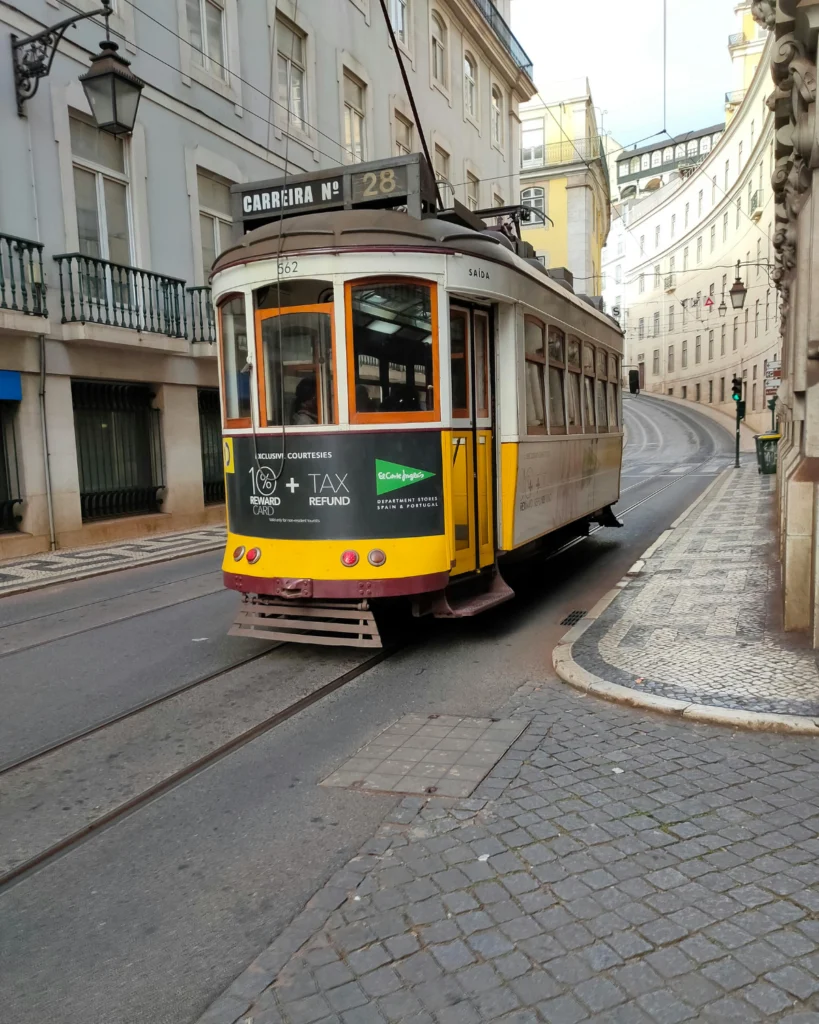
The hop-on hop-off bus? €15-20 for unlimited daily travel, covering more area than trams, with guaranteed seats and actual views.
The Morning Magic Hours
Here’s what I discovered through experimentation: tourist buses start at 7 AM, but tourists don’t board until 10 AM. Those three hours are golden.
Last Tuesday, we had the entire upper deck to ourselves from 7:30 to 9:00 AM. Theo conducted imaginary orchestras. Lena documented “evidence of vampire activity” (shadows in doorways). I sketched views I’d never accessed from street level.
Furthermore, the light at that hour transforms everything. Buildings glow amber. Meanwhile, the river becomes silver. Surprisingly, even mundane apartment blocks look architectural magazine-worthy. Professional photographers know this—I’ve met several who ride early buses specifically for the elevated sunrise angles.
The Parent’s Strategic Advantage
Visitors without children cannot comprehend the layers of complication that come with visiting Lisbon with kids. There’s the constant negotiation: “I’m tired.” “I’m hungry.” “I need the bathroom.” “Can we go home?” “Why is everything uphill?”
Consequently, the bus became our mobile base. When Theo announced bathroom emergencies—always at maximum volume in quiet places—we knew exactly where to go. Stop 4: Cultural Center, marble bathrooms. Stop 11: Time Out Market, clean and central. Stop 15: Park facilities that most tourists never find.
Therefore, we developed a routine. First, board early, complete one full circuit while the kids wake up. Then identify targets for afternoon exploration. Subsequently, hop off strategically, always working downhill. Finally, reboard when energy flags.
As a result? We see more, fight less, and actually enjoy ourselves.
The Unexpected Social Network
Thursday mornings became special once we discovered what Lena named “The Coffee Ladies.” Four elderly women board at 9 AM sharp, carrying thermoses and homemade pastries. Subsequently, they ride the complete circuit, gossiping and commenting on city changes.
“We used to meet in cafés,” Dona Maria explained. “But why sit still when you can tour the city? Plus, the bus is heated in winter, cooled in summer.”
In fact, they taught us things no guidebook mentions. Which driver gives the smoothest ride (António, morning shift). Additionally, which seats avoid sun glare (left side, rows 3-4). Most importantly, when to spot the Archbishop walking his dog (Tuesdays, 8:15 AM, near the cathedral).
Ultimately, they’re not tourists. Rather, they’re urban explorers who’ve realized that observation beats participation.
The Alfama Advantage
From bus height, Alfama reveals secrets invisible from street level. For instance, you see into private courtyards where laundry dances on lines. Furthermore, you spot rooftop gardens hidden from below. Additionally, you watch daily life unfold in windows—grandmothers cooking, children doing homework, cats supervising everything from sunny ledges.
Eventually, we discovered that hopping off at Portas do Sol and walking downhill through Alfama takes 20 minutes and zero effort. In contrast, walking uphill? Forty-five minutes of sweat and suffering. Same neighborhood, same sights, completely different experience.
One morning, we watched an elderly man teaching his grandson to play guitar on a hidden terrace. From the street, we’d never have known they existed. From the bus, we witnessed a moment of cultural transmission that felt more authentic than any fado show.
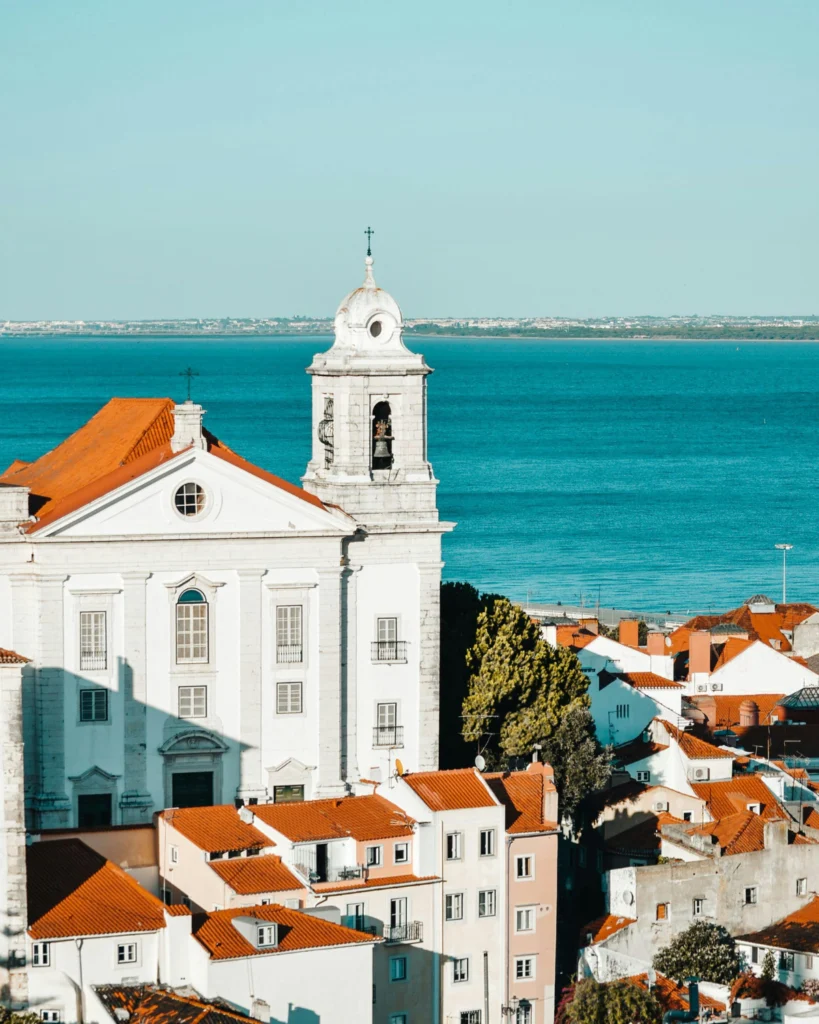
The Weather Factor on Lisbon Hop-On Hop-Off Tours
Lisbon’s November delivers about 128mm of rain, usually in dramatic afternoon downpours. During one storm, we stayed on the bus, watching the city transform. Rain turns the city into something from a film noir—dramatic, moody, beautiful.
From our covered perch, we studied how locals navigate storms. They know which arcades connect, which awnings provide protection, which doorways offer refuge. It’s urban ballet, choreographed by centuries of practice.
Summer presents different challenges. In August, when thermometers hit 30°C and tourists multiply exponentially, the bus provides mobile shade and breeze. We learned that morning routes keep you on the shaded side. Afternoon circuits require right-side seats to avoid sun.
The Photography Secret
I sketch constantly, always hunting for perfect angles. Most of Lisbon’s famous viewpoints are mobbed by afternoon. Good luck getting a clean shot at any miradouro without twenty strangers photobombing your frame.
However, from the bus, entirely different perspectives emerge. There’s a spot—I’ll tell you exactly where—between stops 8 and 9, where the bus turns left onto a small rise. For exactly three seconds, the castle, river, bridge, and cathedral align perfectly. Remarkably, this view doesn’t exist from any street or viewpoint. Instead, it only happens at bus height, at bus speed.
Since discovering this, I’ve captured this moment in every season, every light. Morning gold, afternoon silver, evening copper. Interestingly, never the same twice.

Lisbon Hop-On Hop-Off Tours: The Real Cost Revealed
Let’s be honest about money. Lisbon welcomed almost 27 million visitors in 2023. Consequently, they’re all competing for the same experiences, the same trams, the same photos.
Daily transport costs add up fast. Five tram rides: €15.50. Two metro trips: €3.70. Furthermore, the inevitable taxi when exhaustion wins: €8-12. Total: €27-31 daily.
Meanwhile, the hop-on hop-off pass: €15-20. All day. Unlimited. Including routes trams don’t cover.
However, hidden savings matter more. Energy preserved for actual experiences. Additionally, stress avoided from navigation confusion. Moreover, arguments prevented about directions. Finally, time saved from being lost. These have value beyond euros.
The Neighborhood Strategy That Works
Subsequently, we’ve developed what Sarah calls “strategic tourism.” First circuit: reconnaissance. Note which neighborhoods feel interesting, which stops have nearby cafés, where locals outnumber tourists.
Next comes the second phase: targeted exploration. Early morning in Belém before crowds. Then afternoon in shaded parks. At last, Bairro Alto's evening when residents take back their streets.
Essentially, the bus isn’t avoidance of walking—it’s intelligent energy management. Indeed, we walk plenty, but downhill when possible, in shade when available, with purpose always.

When Lisbon Hop-On Hop-Off Tours Made Everything Click
Last week, my brother visited from London. He arrived full of walking enthusiasm and tram romanticism. “We’re doing this properly,” he declared. “No tourist nonsense.”
Day one: we walked to the castle. Unfortunately, he needed three rest stops.
Day two: we attempted Tram 28. After forty minutes waiting, twenty minutes squeezed inside, zero views.
Day three: he surrendered. “Show me your bus thing,” he gasped, collapsed on our sofa.
The next morning, 7:30 AM, upper deck, front row. The city spread golden below us. By the fourth stop, he was planning routes. Subsequently, by the eighth, he was photographing angles he’d never imagined. Eventually, by the complete circuit, he was converted.
“Why doesn’t everyone know about this?” he asked.
However, they do. Locals know. Nevertheless, they just don’t advertise it, because then tourists would crowd the buses too.
What Senhora Rosa Taught Me
Yesterday afternoon, Senhora Rosa and I shared coffee on her balcony. Below, tourists struggled past, obviously lost, definitely tired, probably arguing.
“You know what age taught me?” she said. “Energy is finite. Stubbornness is expensive. Intelligence is free.”
She pointed at the passing tourists. “They’ll walk fifteen kilometers today, see six things, remember three. In contrast, you’ll travel twenty kilometers, see twenty things, remember them all. Who’s winning?”
Indeed, she’s right. After eighteen months of doing Lisbon wrong, I finally understand. Although the city doesn’t care how you explore it, your feet do. Similarly, your family does. Most importantly, your memory does.
Therefore, the hop-on hop-off bus isn’t surrender. Rather, it’s strategy. Furthermore, it’s what locals do when tourists aren’t watching. Ultimately, it’s the smart solution to a vertical city that predates modern transportation by centuries.
Trust me—I learned the hard way. Better yet, trust Senhora Rosa. After 78 years in Lisbon, she’s earned the right to know what works. The tourist bus isn’t cheating. It’s winning.
Planning your Lisbon adventure? Try the early morning bus strategy. Use it for reconnaissance, elevation management, and energy conservation. Then explore neighborhoods on foot, working with gravity, not against it. Your feet, family, and photos will thank you.
FAQs About Lisbon Hop-On Hop-Off Tours
What are Lisbon Hop-On Hop-Off Tours?
Flexible city sightseeing at your own pace.
Is €15 enough?
Yes covers key routes and stops.
How often do the buses run?
Frequent departures all day long.

